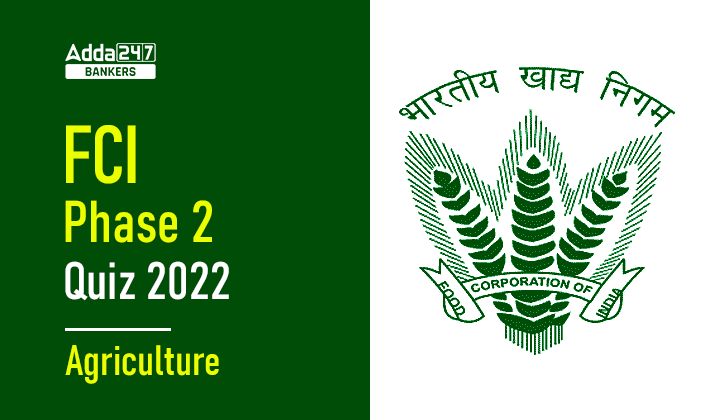Q1. The size of a seed drill is expressed by___________
(a) Number of seed sown per unit time
(b) Length x width of the machine
(c) The number of furrow openers x distance between two furrow openers
(d) Area covered per unit time
Q2. Major portion of the soil particle transported through wind erosion occurs with-
(a) Suspension
(b) Saltation
(c) Surface creep
(d) Deposition
Q3. The working life of a tractor drawn cultivator is usually-
(a) 10000 hrs
(b) 7500 hrs
(c) 5000 hrs
(d) 2500 hrs
Q4. In case of precession planter, the height of drop of a seed from hopper to ground should
be about _________?
(a) More than 30cm
(b) More than 25cm
(c) As close to the ground as possible
(d) None of the above
Q5. The type of furrow opener recommended for use in hard and trashy ground and also in
wet, dry soil is __________?
(a) Single disc type
(b) Curved runner type
(c) Hoe type
(d) Stub runner type
Q6. Horizontal plate seed metering device is used in:
(a) Seed-cum-fertilizer drill
(b) Seed drill
(c) Planter
(d) Transplanter
Q7. In mould board plough, chilled cast iron is used for the making of-
(a) Share
(b) Mould Board
(c) Land side
(d) Frog
Q8. The soil classes that are considered capable of sustained use for cultivated field crops are-
(a) Class I-V
(b) Class I-IV
(c) Class II-VI
(d) Class IV-VIII
Q9. In an offset harrow, the number of gang is ___________?
(a) 1
(b) 3
(c) 4
(d) 2
Q10. Hand operated sprayers are to be operated at _________ kg/cm 2 .
(a) 0.1-0.7
(b) 7-10
(c) 10-20
(d) 20-25
Solutions
S1. Ans (c)
Sol. Seed drill is a machine used for placing the seeds in a continuous stream in furrows at
uniform rate and at controlled depth with an arrangement of covering the seeds with soil.
Seed drill performs the following functions-
1. To carry the seeds.
2. To open furrows at uniform depths
3. To meter the seeds
4. Todeposite the seeds in furrows in an acceptable pattern
5. To cover the seeds and compact the soil around the seed.
The size of a seed drill is expressed by the number of furrow openers x distance between two
furrow openers.
S2. Ans (b)
Sol. Saltation is a type of wind erosion that occurs among middle-sized soil particles that
range from 0.05 mm to 0.5 mm in diameter. Such particles are light enough to be lifted off
the surface, but are too large to become suspended. These particles move through a series of
low bounces over the surface, causing abrasion on the soil surface and attrition (the breaking
of particles into smaller particles).
S3. Ans (d)
Sol. The working life of a tractor drawn cultivator is 2500 hours.
S4. Ans (d)
Sol. In case of precession planter, the height of drop of a seed from hopper to ground should
be as close to the ground as possible in order to maintain the precision level.
S5. Ans (a)
Sol. Single disc furrow opener is used in soils having plant debris and trash mulch. The disc
is set at a tilt angle of 5º to form a small ridge. The seeds are dropped in the delivery boot
placed on the concave side of the center of the disc. A scrapper is provided on concave side
to reduce soil throw at higher speed and prevent soil build up.
S6. Ans (c)
Sol. Horizontal plate planter has a spring-loaded cut-off device that rides on top of the plate
and wipes off excess seeds as the cell moves beneath it. A spring-loaded knock-out device
pushes the seeds from the cells when they are over the seed tube.
S7. Ans (a)
Sol. The share is one of the important parts of the plough, which penetrates into the soil and
makes a horizontal cut below the soil surface. It is a sharp, well-polished and pointed
component.
Share point: It is the forward end of the cutting edge which actually penetrates
into the soil.
Cutting edge: It is the front edge of the share which makes horizontal cut in the soil.
Wing of share: It is the outer end of the cutting edge of the share. It supports the
plough bottom.
Gunnel: It is the vertical face of the share which slides along the furrow wall.
It takes the side thrust of the soil and supports the plough bottom against the furrow
wall.
Cleavage edge: It is the edge of the share which forms joint between mould board
and share on the frog.
Wing bearing: It is the level portion of the wing of the share, providing a bearing for
the outer corner of the plough bottom.
The shares are made of chilled cast iron or steel. The steel mainly contains about 0.70 to
0.80% carbon and about 0.50 to 0.80% manganese besides other minor elements.
S8. Ans (b)
Sol. Soils classes as 1, 2, 3 and 4 are considered capable of sustained use for cultivated field
crops, those in classes 5 and 6 only for perennial forage crops and those in class 7 for neither.
Class 1 – Soils in this class have no significant limitations in use for crops. The soils are deep,
well to imperfectly drained, hold moisture well, and in the virgin state were well supplied
with plant nutrients.
Class 2 – Soils in this class have moderate limitations that restrict the range of crops or
require moderate conservation practices. The soils are deep and hold moisture well.
Class 3 – Soils in this class have moderately severe limitations that restrict the range of crops
or require special conservation practices.
Class 4 – Soils in this class have severe limitations that restrict the range of crops or require
special conservation practices or both. The soils are low to fair in productivity for a fair range
of crops but may have high productivity for a specially adapted crop.
Class 5 – Soils in this class have very severe limitations that restrict their capability to
produce perennial forage crops and improvement practices are feasible. The soils are capable
of producing native or tame species of perennial forage plants and may be improved by the
use of farm machinery. The improvement practices may include clearing of bush, cultivation,
seeding, fertilizing and water control.
Class 6 – Soils in this class are capable only of producing perennial forage crops and
improvement practices are not feasible. The soils provide some sustained grazing for farm
animals, but the limitations are so severe that improvement by use of farm machinery is
impractical.
Class 7 – Soils in this class have no capability for arable culture or permanent pasture. This
class also includes rock land, other non-soil areas, and minute bodies of water that are too
small to be shown on the maps.
Class 0 – Organic soils (not placed in capability classes).
S9. Ans (d)
Sol. An offset disc harrow has two gang of disc. The concave disc on front gang moves the
soil to right hand side and the rear to the left hand. The land tilled twice and the fields are
nearly levelled after harrowing. The angle of the gang is variable and can be adjusted to suit
particularly tilling requirements and soil conditions.
S10. Ans (a)
Sol. Hand held sprayer is ideally suited for home gardens and small fields. It consists of a
container of 0.5 to 3.51it capacity a built-in air pump, pressure gauge, nozzle and flow cut off
lever. The tank is to be filled with ¾ th volume. The pump is operated to build pressure in the
tank of 0.15-0.3 kg/cm 2 . When the flow cut off lever is pressed, the fluid passes through the
nozzle and spraying is done. The application rate ranges from 45 to 100 litres /ha.



 GA Capsule for SBI Clerk Mains 2025, Dow...
GA Capsule for SBI Clerk Mains 2025, Dow...
 The Hindu Review October 2022: Download ...
The Hindu Review October 2022: Download ...
 AAI ATC Syllabus 2025 and Exam Pattern f...
AAI ATC Syllabus 2025 and Exam Pattern f...





